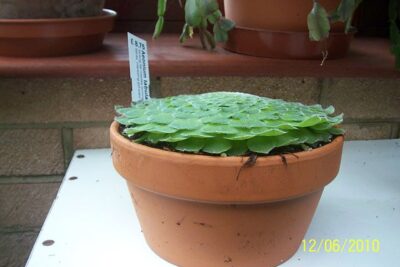
Can Succulents Easily Spread and Overrun Gardens?

Succulents have become increasingly popular in gardens and indoor spaces due to their unique and low-maintenance nature. These drought-resistant plants are known for their thick and fleshy leaves, which store water and allow them to survive in arid conditions. However, there is a concern among gardeners and horticulturists that these resilient plants can easily spread and overrun gardens if not properly managed.
We will explore the potential for succulents to become invasive and take over garden spaces. We will discuss the characteristics of succulents that contribute to their ability to spread, such as their ability to reproduce through offsets and cuttings. Additionally, we will delve into the challenges faced by gardeners in controlling and containing succulent growth, including the risk of displacing native plant species and the impact on biodiversity. Finally, we will provide tips and strategies for managing succulents in a garden setting to prevent them from becoming invasive and overwhelming other plant species.
- Yes, succulents can easily spread and overrun gardens
- Regular pruning and maintenance can prevent succulents from taking over
- Planting succulents in containers can help control their spread
- Regularly removing any offshoots or baby plants can prevent succulent overgrowth
- Creating physical barriers like rocks or borders can help contain succulents
- Using selective herbicides can help control succulent growth
- Regularly monitoring and removing any invasive succulent species can prevent garden overrun
- Proper spacing between succulent plants can help prevent overcrowding
- Regularly checking and removing any seedlings or volunteers can prevent succulent invasion
- Seeking professional advice can help develop a specific plan to prevent succulent overgrowth
- Frequently Asked Questions
Yes, succulents can easily spread and overrun gardens
When it comes to gardening, succulents are often praised for their low maintenance and ability to thrive in various conditions. However, it is important to be aware that these seemingly harmless plants have the potential to spread and overrun gardens if not properly managed.
1. Rapid growth:
Succulents are known for their ability to grow and propagate quickly. Many species produce offsets, also known as "pups," which can easily take root and grow into new plants. This rapid growth can lead to overcrowding and the dominance of succulents in a garden.
2. Root system:
 Step-by-Step Guide to Propagating Bear Paw Succulent from a Leaf
Step-by-Step Guide to Propagating Bear Paw Succulent from a LeafSucculents have extensive root systems that can easily spread and colonize new areas. Their roots are adapted to absorb water efficiently, allowing them to survive in harsh conditions. However, this adaptability also means that they are skilled at finding new spaces to grow, including areas where they may not be wanted.
3. Lack of natural predators:
Unlike some other plants, succulents often lack natural predators that can help keep their growth in check. This can be attributed to their unique adaptations, such as thorny or waxy leaves, which deter herbivores from feeding on them. Without natural controls, succulents have the potential to rapidly spread and overrun gardens.
4. Competitive advantage:
Succulents are well-equipped to compete with other plants for resources. They have thick leaves and stems that can store water, allowing them to survive in dry conditions and outcompete neighboring plants. This competitive advantage can lead to the domination of succulents in a garden, pushing out other desirable plant species.
5. Lack of maintenance:
If left unchecked, succulents can quickly take over a garden due to their ability to thrive with minimal care. This is particularly true in arid regions where succulents are naturally adapted to survive. Neglecting regular maintenance, such as pruning and removing unwanted plants, can result in succulents spreading uncontrollably.
 Propagating Succulent Leaves: A Guide to Growing New Plants
Propagating Succulent Leaves: A Guide to Growing New PlantsIf you want to incorporate succulents into your garden, it is essential to take proactive measures to prevent them from spreading and becoming invasive. Regular pruning, removing offsets, and maintaining proper spacing can help control their growth and ensure a well-balanced garden.
Regular pruning and maintenance can prevent succulents from taking over
When it comes to gardening, one might assume that succulents are relatively low-maintenance plants. While it is true that succulents require less water and attention compared to other plant varieties, they can still spread and overrun gardens if not properly pruned and maintained.
Why do succulents spread?
Succulents have a unique ability to reproduce and spread. They do this through various methods, such as producing offsets, aerial roots, or propagating from fallen leaves. These mechanisms allow succulents to multiply and establish new plants in different areas of the garden.
How can succulent spread be prevented?
Preventing succulents from taking over your garden requires regular pruning and maintenance. Here are some effective strategies to keep their growth in check:
 Can You Propagate Donkey's Tail Succulent with Leaf Cuttings?
Can You Propagate Donkey's Tail Succulent with Leaf Cuttings?- Trimming and removing offsets: Succulents often produce offsets, which are smaller plants that grow adjacent to the main plant. By regularly trimming and removing these offsets, you can prevent them from spreading and taking over other areas of your garden.
- Dividing and replanting: Some succulents tend to grow in clusters or clumps. If left unattended, these clusters can expand rapidly. To prevent overcrowding, you can divide the clusters and replant them in different parts of your garden.
- Pruning aerial roots: Certain succulents develop aerial roots that can anchor themselves in the ground and spread horizontally. Pruning these roots regularly can help control their growth and prevent them from overtaking neighboring plants.
- Regularly removing fallen leaves: Succulents can propagate from fallen leaves, leading to new plants sprouting up unexpectedly. Removing fallen leaves from the garden can minimize the chances of unintentional propagation.
Conclusion
While succulents can spread and potentially overrun gardens if left unattended, regular pruning and maintenance can easily prevent this issue. By implementing the strategies mentioned above, you can enjoy the beauty of succulents in your garden without worrying about them taking over.
Planting succulents in containers can help control their spread
One common concern among gardeners is whether succulents, known for their ability to thrive in various conditions, can easily spread and overrun gardens. While succulents are generally low-maintenance and well-suited for arid environments, it is essential to understand their growth habits and take appropriate measures to prevent them from taking over your garden.
Understanding succulent growth patterns
Succulents are known for their ability to propagate easily through various methods, such as stem or leaf cuttings. This natural ability to reproduce rapidly can be both a blessing and a challenge for gardeners. If left unchecked, some succulent species can quickly colonize an area and outcompete other plants for resources.
 Succulent Propagation: Home Techniques for Thriving Varieties
Succulent Propagation: Home Techniques for Thriving VarietiesHowever, it is important to note that not all succulents are invasive or aggressive in their growth habits. Some species, like sedums or echeverias, tend to stay relatively compact and are less likely to spread rapidly. On the other hand, certain types, such as stonecrops or ice plants, can be more vigorous in their growth and have the potential to overrun a garden if not properly managed.
Controlling succulent spread with container planting
One effective way to prevent succulents from taking over your garden is by planting them in containers. By confining their growth to specific pots or planters, you can easily control their spread and prevent them from overtaking other plants in your garden.
When choosing containers for your succulents, ensure they have proper drainage to prevent waterlogged soil, which can lead to root rot. Additionally, consider using containers made of materials like ceramic or terracotta, as they provide better airflow to the roots and help prevent moisture retention.
Regular maintenance and division
To keep succulents from spreading excessively, regular maintenance is crucial. This includes removing any offsets or "pups" that may emerge from the main plant. These small offshoots can be carefully detached and replanted in separate containers to control their growth.
Furthermore, periodically dividing mature succulent plants can help maintain their size and prevent overcrowding. By separating clumps of succulents and replanting them in different containers or areas of the garden, you can effectively manage their spread and ensure a well-balanced landscape.
 Fast-Spreading and Prolific Succulents: A Guide to Rapid Propagation
Fast-Spreading and Prolific Succulents: A Guide to Rapid PropagationConclusion
While succulents can indeed be vigorous growers, with appropriate planning and maintenance, their spread can be easily controlled. By planting them in containers, understanding their growth patterns, and practicing regular maintenance, you can enjoy the beauty and versatility of succulents without the worry of them taking over your garden.
Regularly removing any offshoots or baby plants can prevent succulent overgrowth
One common concern among gardeners is whether succulents have the tendency to spread and overrun gardens. While succulents are known for their ability to propagate and produce offshoots or baby plants, it is important to note that with proper care and maintenance, you can easily prevent succulent overgrowth.
Why do succulents spread?
Succulents have a unique survival mechanism that allows them to propagate and spread. They produce offshoots or baby plants, also known as pups, which grow from the base of the mother plant. These offshoots can eventually develop their own root system and become independent plants.
Additionally, some succulents can also spread through seeds or by dropping leaves that root and form new plants. This natural ability to multiply is what makes succulents so fascinating and versatile in gardens.
Preventing succulent overgrowth
To prevent succulents from taking over your garden, it is important to regularly remove any offshoots or baby plants that emerge. This can be done by gently separating the offshoot from the mother plant using a clean, sharp knife or by carefully twisting it off.
 Can Succulent Leaves Regrow Once They Drop?
Can Succulent Leaves Regrow Once They Drop?It is crucial to wait until the offshoot has developed its own roots before removing it from the mother plant. This ensures that the pup has a higher chance of survival when it is transplanted.
Another effective way to control succulent overgrowth is by limiting the amount of water and nutrients the plants receive. While succulents are known for their ability to store water in their leaves and stems, overwatering can lead to rapid growth and expansion. By watering sparingly and allowing the soil to dry out between waterings, you can slow down the growth of your succulents.
Furthermore, planting succulents in containers or designated areas can help contain their spread. This allows you to easily manage and control their growth, preventing them from taking over other plants in your garden.
The benefits of succulent propagation
While preventing succulent overgrowth is important, it is worth mentioning that succulent propagation also offers numerous benefits. Propagating succulents allows you to expand your collection, create new arrangements, and share plants with friends and family.
By carefully removing and transplanting offshoots, you can create a diverse and visually appealing succulent garden. Additionally, propagating succulents can be a rewarding and enjoyable process, allowing you to witness the growth and development of new plants.
Overall, with proper care and maintenance, succulent overgrowth can be easily prevented. By regularly removing offshoots, controlling water and nutrient intake, and planting in designated areas, you can enjoy the beauty and versatility of succulents without worrying about them taking over your garden.
Creating physical barriers like rocks or borders can help contain succulents
One common concern among gardeners is whether succulents can easily spread and overrun gardens. While succulents are known for their ability to thrive in various conditions, they do not typically spread aggressively like some other plant species. However, it is important to take certain precautions to prevent succulents from taking over your garden.
 Can Succulent Leaves Grow Roots When Planted in Soil?
Can Succulent Leaves Grow Roots When Planted in Soil?A simple and effective method to contain succulents is by creating physical barriers such as rocks or borders. These barriers serve as a boundary that prevents the succulents from spreading beyond a designated area. By placing rocks or borders around the succulent beds or pots, you can effectively control their growth and prevent them from overrunning your garden.
Additionally, regular maintenance is crucial in keeping succulents in check. This includes pruning and removing any unwanted growth. By regularly trimming back the succulents, you can control their size and prevent them from spreading excessively. It is important to note that succulents have a natural tendency to propagate through offsets or "pups," which are small plantlets that grow from the base of the parent plant. Removing these offsets as they appear will help prevent the succulents from spreading too rapidly.
Another method to prevent succulents from spreading is by regularly monitoring their growth and removing any unwanted runners or offshoots. These runners are long stems that extend from the parent plant and can potentially root and establish new plants elsewhere in the garden. By promptly removing these runners, you can prevent the succulents from taking over your garden.
It is worth noting that some specific varieties of succulents may have a more aggressive growth habit than others. Before planting succulents in your garden, it is advisable to research their growth habits and choose varieties that are known to be less invasive. By selecting suitable succulents for your garden, you can minimize the risk of them spreading and overwhelming your other plants.
While succulents are generally not prone to aggressive spreading, it is important to take precautions to prevent them from overrunning your garden. Creating physical barriers, regular maintenance, and monitoring their growth are effective strategies to control the spread of succulents. By implementing these measures, you can enjoy the beauty of succulents without having to worry about them taking over your garden.
Using selective herbicides can help control succulent growth
Succulents are known for their ability to thrive in harsh conditions and their unique aesthetic appeal. However, their resilience and fast growth rate can sometimes pose a challenge for gardeners who want to maintain a well-balanced garden. Fortunately, there are ways to control succulent growth and prevent them from spreading and overtaking your garden.
1. Regular Monitoring and Maintenance
One of the most effective ways to prevent succulents from spreading is by regularly monitoring and maintaining your garden. Keep an eye out for any signs of overgrowth or spreading, such as plants encroaching on other areas or crowding out other plants.
 Can Succulent Leaves Regrow Once they Fall Off?
Can Succulent Leaves Regrow Once they Fall Off?When you notice any unwanted growth, it's important to take action promptly. Remove the excess succulents by pulling them out from the roots, making sure to wear gloves to protect your hands from any spines or thorns. This will help prevent them from reestablishing themselves in your garden.
2. Selective Herbicides
If you're dealing with a particularly stubborn or widespread succulent infestation, using selective herbicides can be an effective solution. Selective herbicides target specific types of plants while sparing others, allowing you to control the growth of succulents without harming your desired plants.
Before using any herbicides, it's important to carefully read and follow the instructions provided by the manufacturer. Apply the herbicide directly to the succulents, ensuring that you cover all the leaves and stems. It may take multiple applications over a period of time to fully eradicate the succulents.
3. Physical Barriers
Another way to prevent succulents from spreading is by using physical barriers. This can be as simple as installing edging or borders around your garden beds to prevent the succulents from encroaching on other areas.
Additionally, you can create barriers within your garden by using materials such as landscape fabric or mulch. These barriers will help restrict the growth of succulents and prevent them from spreading to unwanted areas.
4. Regular Pruning
Regular pruning is essential for maintaining the shape and size of your succulents. By removing excess growth and trimming back any spreading branches or stems, you can prevent succulents from overtaking your garden.
When pruning succulents, make sure to use clean and sharp pruning shears to avoid damaging the plants. Focus on removing any overgrown or dead parts while leaving the healthy portions intact.
 Succulent Pruning: Master the Art of Stem Cutting with Expert Tips
Succulent Pruning: Master the Art of Stem Cutting with Expert TipsRemember to wear gloves when handling succulents, as some varieties may have spines or thorns that can cause irritation or injury.
By implementing these strategies, you can effectively control succulent growth and prevent them from easily spreading and overrunning your garden. With proper maintenance and care, you can enjoy the beauty of succulents while keeping them in check.
Regularly monitoring and removing any invasive succulent species can prevent garden overrun
One common concern among gardeners is whether succulents have the potential to spread and overrun gardens. While succulents are known for their ability to thrive in various conditions, not all succulents are invasive. In fact, many succulents can be easily controlled with proper monitoring and maintenance.
Identifying invasive succulent species
It is important to identify the specific succulent species that have the potential to become invasive in your garden. Some succulents, like the common ice plant (Carpobrotus edulis), can spread rapidly and outcompete other plants in the area. Other examples of invasive succulents include the Mexican feather grass (Nassella tenuissima) and the mother of thousands (Kalanchoe daigremontiana).
To prevent succulents from overrunning your garden, follow these steps:
- Research before planting: Before adding any succulents to your garden, make sure to research their growth habits and potential invasiveness. Choose non-invasive succulents that are well-suited to your local climate and soil conditions.
- Regularly monitor your garden: Keep a close eye on your garden to identify any signs of invasive succulent growth. If you notice a succulent spreading rapidly or crowding out other plants, take immediate action to control its growth.
- Remove invasive succulents: If you have identified an invasive succulent species in your garden, it is essential to remove it promptly. Dig out the plant, including its roots, and dispose of it properly to prevent regrowth.
- Maintain proper spacing: When planting succulents, ensure that there is enough space between each plant. This will prevent overcrowding and reduce the chances of succulents spreading uncontrollably.
- Regular pruning: Pruning your succulents regularly will help control their growth and prevent them from becoming invasive. Trim back any overgrown or spreading branches to maintain a well-managed garden.
By following these steps and implementing proper garden management practices, you can effectively prevent succulents from easily spreading and overrunning your garden. Remember, not all succulents are invasive, but it is crucial to stay vigilant and take action if you notice any signs of rapid growth or crowding.
 Succulent Resilience: Regrowth After Cutting or Damage
Succulent Resilience: Regrowth After Cutting or DamageProper spacing between succulent plants can help prevent overcrowding
Succulents are known for their ability to thrive in various conditions and their low maintenance needs, which is why they have gained popularity among garden enthusiasts. However, one concern that many people have is whether succulents can easily spread and overrun gardens.
While succulents do have the potential to spread and fill up spaces in a garden, this can be easily managed by properly spacing them out. By giving each plant enough room to grow and develop, you can prevent overcrowding and maintain a well-balanced garden.
Why do succulents spread?
Succulents, like many other plants, spread primarily through the growth of their offsets, also known as "pups." These are small, baby succulents that emerge from the base of the parent plant. As they grow, they create new plants that can eventually take up more space in the garden.
Additionally, some succulents have a trailing or spreading growth habit, which means they naturally spread out as they grow. This can be a desirable characteristic for certain garden designs, but it can also lead to overcrowding if not properly managed.
The importance of proper spacing
Proper spacing is crucial when it comes to preventing succulents from overcrowding your garden. By providing enough distance between each plant, you allow them to receive adequate sunlight, nutrients, and airflow. This not only promotes their overall health but also prevents the spread of diseases and pests that can easily affect closely packed succulents.
When planning your succulent garden, consider the mature size of each plant and allow sufficient space for them to grow without encroaching on one another. This may involve researching the specific requirements of each succulent variety you have or consulting with a gardening expert.
Tips for spacing succulents
To ensure proper spacing, here are some tips to follow:
- Measure and plan: Before planting, measure the mature size of each succulent and plan accordingly to provide enough room for growth.
- Use a grid system: Consider using a grid system with equal spacing between each plant to maintain consistency and avoid overcrowding.
- Regular maintenance: Keep an eye on your succulents and regularly remove any offsets or pups that are encroaching on neighboring plants.
- Reposition if necessary: If you notice that your succulents are starting to overcrowd, don't hesitate to reposition them to provide more space for healthy growth.
By following these tips and keeping a close eye on your succulents, you can easily prevent them from spreading and overcrowding your garden. Remember, maintaining proper spacing is key to creating a visually appealing and healthy succulent garden.
Regularly checking and removing any seedlings or volunteers can prevent succulent invasion
When it comes to succulents, their ability to spread and overrun gardens largely depends on the specific species and how they are managed. While some succulents have a tendency to spread and can become invasive if left unchecked, others are more well-behaved and stay contained within their designated areas.
Regular monitoring and removal of seedlings or volunteers is essential to prevent succulent invasion in your garden. Many succulents, such as sedums and stonecrops, produce seeds that can be dispersed by wind, birds, or other animals. These seeds can easily find their way into nearby garden beds or cracks in pavement, leading to the growth of new succulent plants.
To prevent succulent invasion, it is important to regularly inspect your garden for any seedlings or volunteers that have sprouted. These young succulent plants can often be identified by their small size and distinctive succulent leaves. If left alone, they can quickly establish themselves and start spreading throughout your garden.
Here are some steps you can take to manage succulent spread:
- Regular weeding: Make it a habit to regularly weed your garden and remove any succulent seedlings or volunteers as soon as you spot them. This will help prevent them from establishing and spreading further.
- Use barriers: Consider using physical barriers, such as rocks or edging, to create boundaries and prevent succulents from encroaching into unwanted areas. This can be particularly useful for aggressive spreaders.
- Divide and conquer: If you notice that a particular succulent is spreading too rapidly, you can divide the plant and replant smaller sections to control its growth. This can help contain the succulent and prevent it from overrunning your garden.
- Regular maintenance: Keeping your garden well-maintained can also help prevent succulent spread. Prune any overgrown succulents and remove any dead or dying parts to discourage further growth and spread.
It's important to note that not all succulents are invasive, and many can be well-behaved garden additions. By regularly checking for and removing any seedlings or volunteers, you can effectively manage succulent spread and maintain a balanced and beautiful garden.
Seeking professional advice can help develop a specific plan to prevent succulent overgrowth
Can Succulents Easily Spread and Overrun Gardens?
Succulents have gained immense popularity in recent years due to their unique appearance, low maintenance requirements, and ability to thrive in various climates. However, one concern that many gardeners have is whether succulents can easily spread and overrun their gardens.
The answer to this question is not a simple yes or no. While some succulent species have a tendency to spread and take over garden beds, others can be easily contained with proper care and maintenance.
Understanding Succulent Spreading Behavior
It's essential to understand that succulents are not all the same when it comes to their spreading behavior. Some succulents, such as Sedum acre or "Goldmoss Stonecrop," are known as aggressive spreaders. These plants produce long trailing stems that root wherever they touch the ground, quickly forming dense mats of growth.
On the other hand, many succulent species, like Echeveria or "Hens and Chicks," tend to grow in tight rosettes and form clumps. These types of succulents are not as invasive and are easier to control.
Preventing Succulent Overgrowth
To prevent succulents from easily spreading and overrunning your garden, it's important to take some preventative measures. Seeking professional advice can help you develop a specific plan tailored to your garden's unique needs. Here are some general guidelines to consider:
- Choose the right succulents: Before planting succulents in your garden, research their spreading behavior and growth habits. Opt for clumping varieties instead of aggressive spreaders if you're concerned about overgrowth.
- Proper spacing: Give your succulents enough space to grow and spread without overcrowding. This will help prevent them from smothering other plants and taking over the garden.
- Regular maintenance: Regularly inspect your succulents for signs of spreading or overgrowth. Trim and prune as necessary to keep them within their designated areas.
- Containment techniques: Use physical barriers like rocks, edging, or containers to restrict the spread of aggressive succulent species. This will help prevent them from invading other parts of your garden.
- Monitor and remove: Keep a close eye on your succulents and promptly remove any runners or offshoots that start to spread beyond their intended boundaries.
By following these preventative measures, you can enjoy the beauty of succulents in your garden without worrying about them taking over.
Remember, every garden is unique, and the spreading behavior of succulents can vary. Seeking professional advice will provide you with tailored information and guidance based on your specific garden conditions.
Frequently Asked Questions
1. Can succulents easily spread and overrun gardens?
While succulents can propagate and spread, they typically do not overrun gardens. With proper care and maintenance, their growth can be easily controlled.
2. How often should I water my succulents?
Succulents have low water requirements and should be watered sparingly, typically once every 7-10 days. It's important to allow the soil to dry out completely between waterings.
3. Do succulents need direct sunlight?
Most succulents thrive in bright, indirect sunlight. However, some varieties can tolerate direct sunlight. It's best to research the specific needs of your succulent species.
4. Can succulents survive in cold climates?
While many succulents are native to warm, arid regions, there are cold-hardy succulent varieties that can survive in colder climates. It's important to choose the right species and provide proper winter protection.
If you want to read more articles similar to Can Succulents Easily Spread and Overrun Gardens?, you can visit the Propagation category.






You Must Read